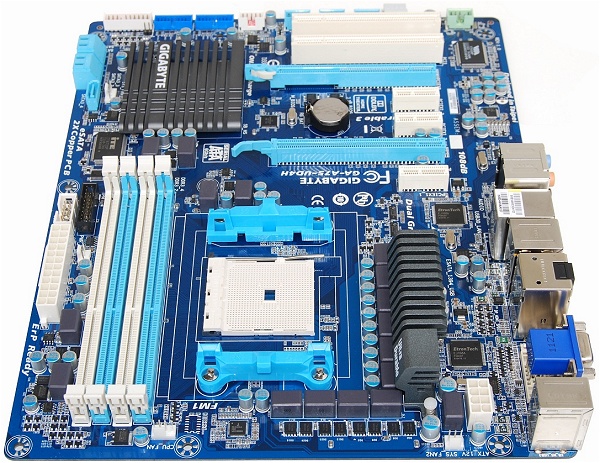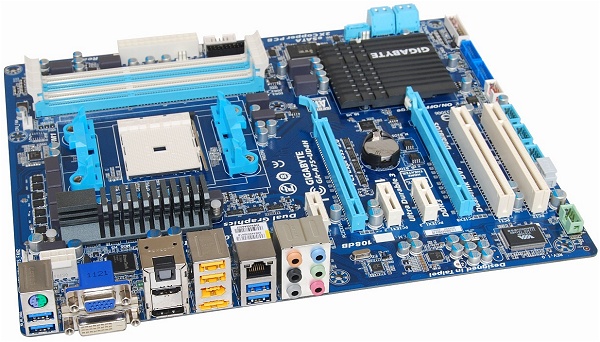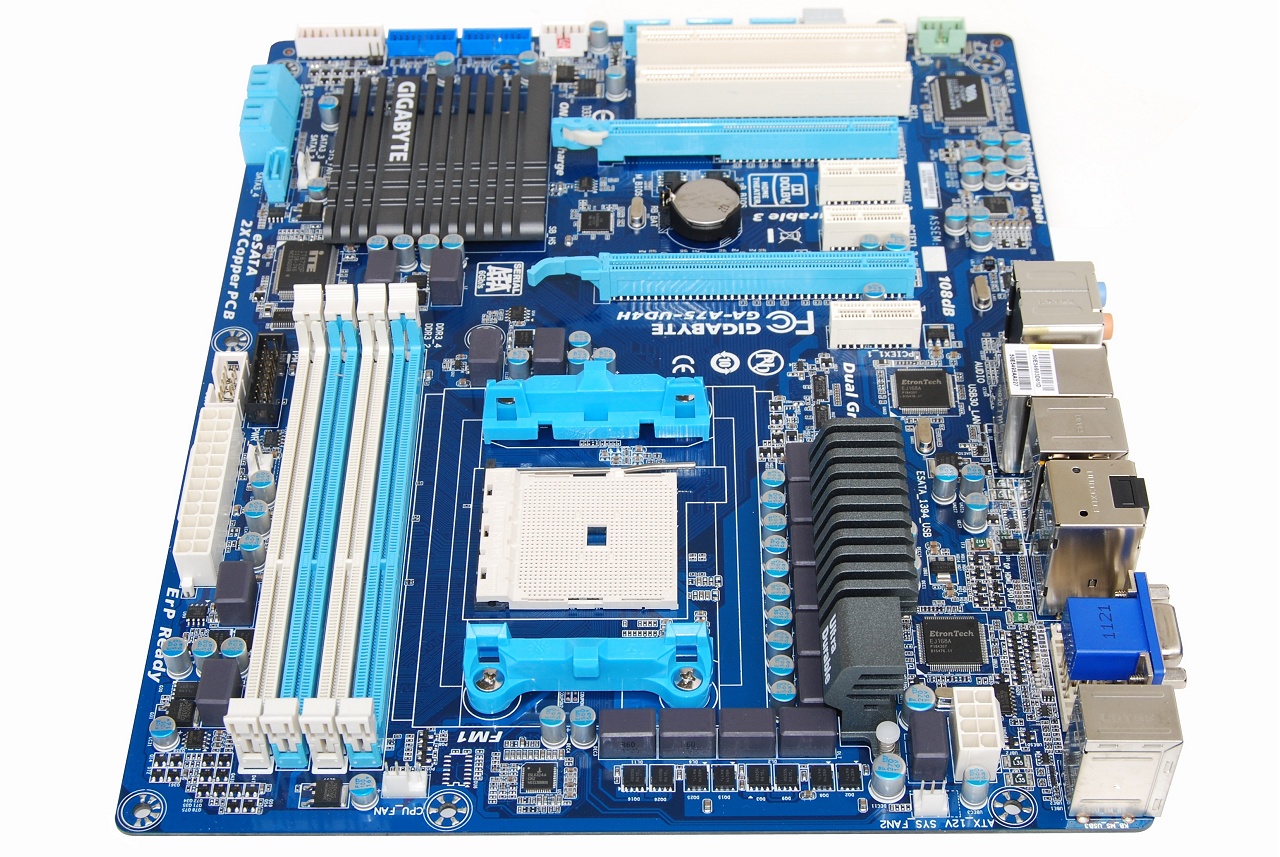Gigabyte A75-UD4H
Asrock and Asus already offer six A75 motherboards each, but Gigabyte seems content with "just" five. Moreover, these five models are separated by a very small price range. There's a $60 difference between the most and least expensive Asrock A75 motherboards, while $45 separates Asus' boards. Gigabyte's boards are only split by $30.

The most expensive models cost just $120 and $123: the A75-UD4H, which we have here today, and the A75-D3H. The A75-UD4H appears to offer the best value. That $3 nets you a superior PCI Express x16 configuration (x16 and x8 bandwidth on the full size slots versus x16 and x4), as well as a DisplayPort output and two additional USB 3.0 ports.

Considering Gigabyte's A75-UD4H is $10 cheaper than the Asrock and Asus A75 motherboards, it's expected that some features will be missing. The board's SATA loadout is limited to the AMD A75 FCH's native support (six SATA 6Gb/s ports with RAID 0, 1, 10 and JBOD). However, only five of these ports are onboard as the sixth serves eSATA duty.


Conversely, whereas the Asus and Asrock motherboards have six USB 3.0 ports, Gigabyte's entrant offers eight by employing two Etron EJ168A controllers, which power two rear USB 3.0 ports and supply another two for the front panel. It's is the largest USB 3.0 controller around measuring 14x14mm and has been widely used by Gigabyte.



Like Asrock and Asus, Gigabyte has also used Realtek's RTL8111E Gigabit Ethernet controller, but the company has opted for a different audio chip. Instead of the ALC892, Gigabyte chose the superior ALC889, which is similar to the aforementioned part but has more ADCs, a better DAC SNR (dB) rating and support for Dolby Home Theater.

As we saw with the F1A75-V Pro, Gigabyte went with dual PCI Express 2.0 x16 slots, but there are three x1 slots with just two traditional PCI slots. Again, Gigabyte only lists Crossfire support for multiple graphics cards, so we wouldn't bank on getting a SLI setup to work. When both PCIe x16 slots are occupied, they are limited to x8 speeds.

Gigabyte used 8+2 power phase design that's similar to Asrock's. As a side note, Gigabyte's $120 A75-D3H is also inferior because it uses a 4+1 power phase design that doesn't have a cooler. If you plan to overclock your AMD A-Series or E2-Series processors, you'd be wise to choose the $123 A75-UD4H for its passively cooled power components.

The I/O panel features one legacy PS/2 port, dual link DVI, DisplayPort, VGA and HDMI outputs, an eSATA connector, two USB 2.0 ports, four USB 3.0 ports, Gigabit Ethernet, six audio jacks and an optical SPDIF port. Before we conclude our tour of the A75-UD4H, there are a few features worth mentioning that really speak of the boards build quality.
One such feature is called "One Port One Fuse" and refers to the use of fuses for the USB ports. Typically, a series of USB ports have one fuse and if that blows, the corresponding connectors become unusable. However, Gigabyte's design offers a layer of protection because only one port will be disabled if a fuse is destroyed for whatever reason.

The second noteworthy function is Gigabyte's DualBIOS feature, which the company has been flaunting for many years now and it's still just as useful as ever. The last feature we'll mention is the company's 3X USB Power Boost design, which not only greatly improves device compatibility but also makes it much faster to charge USB devices.
